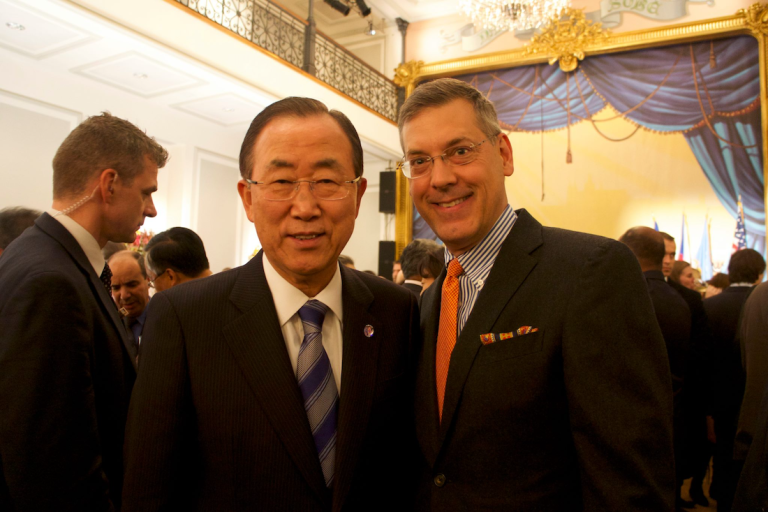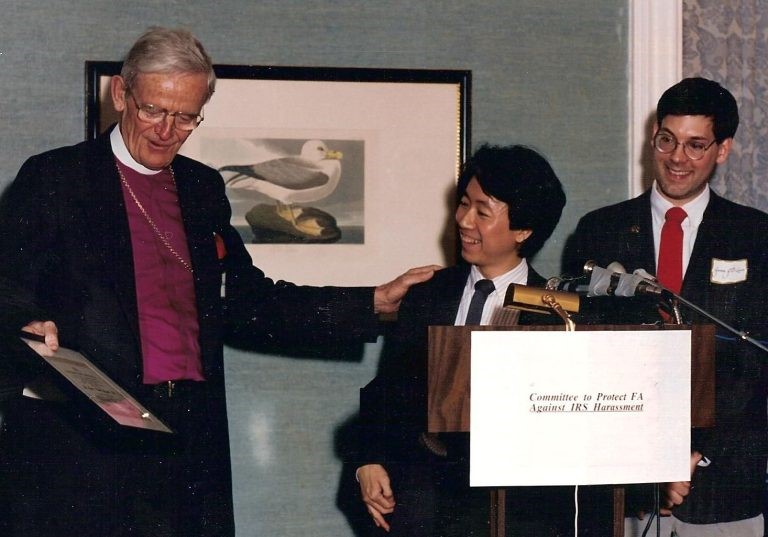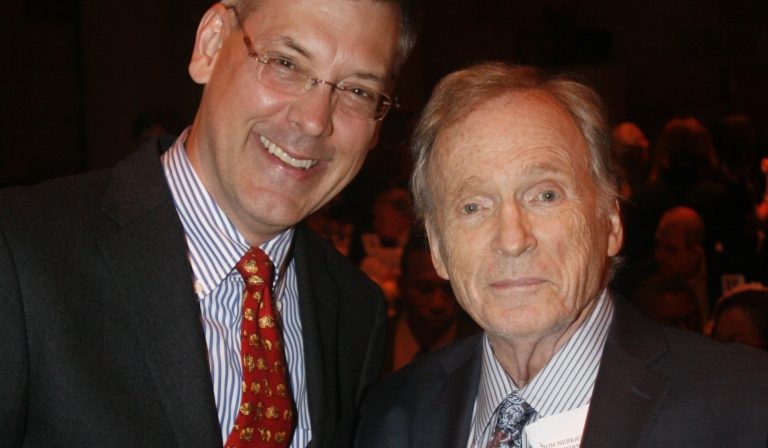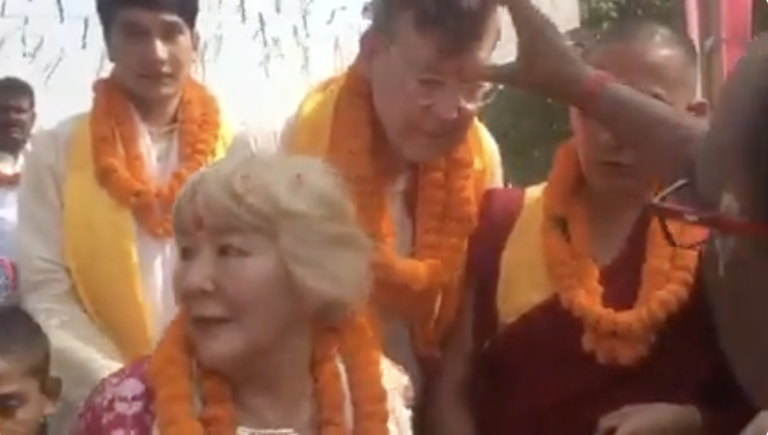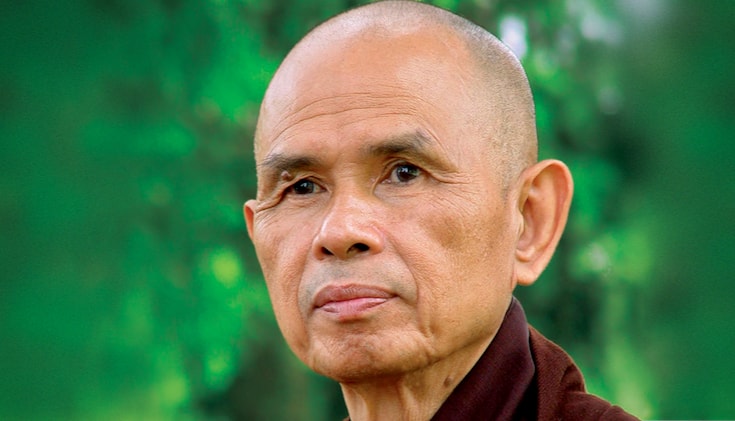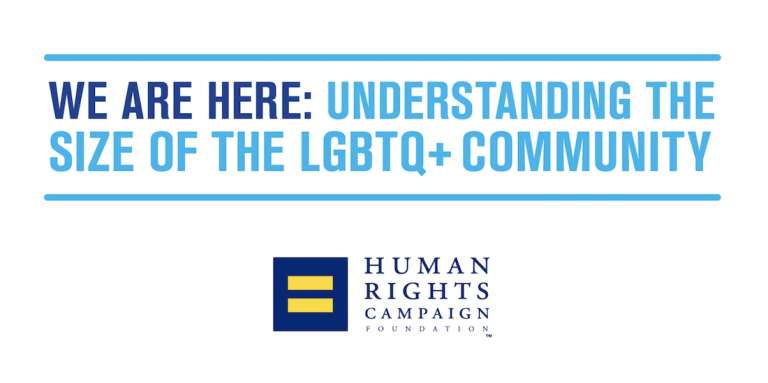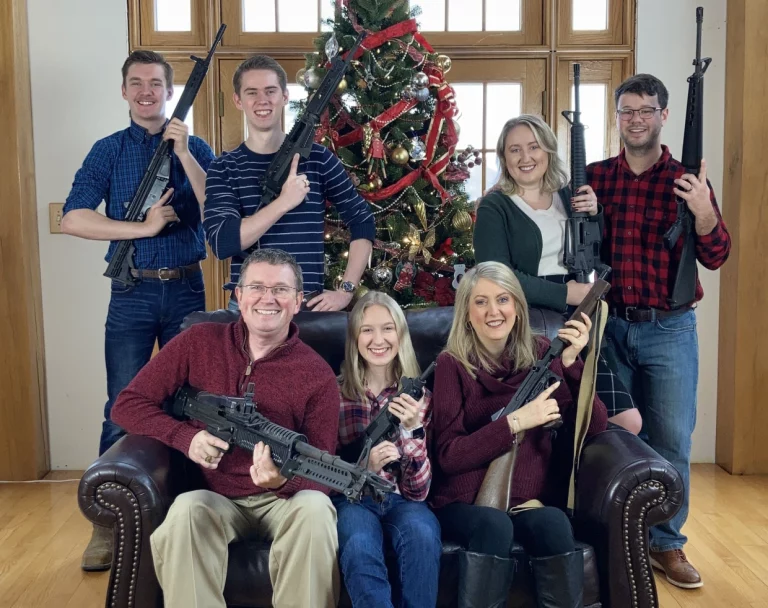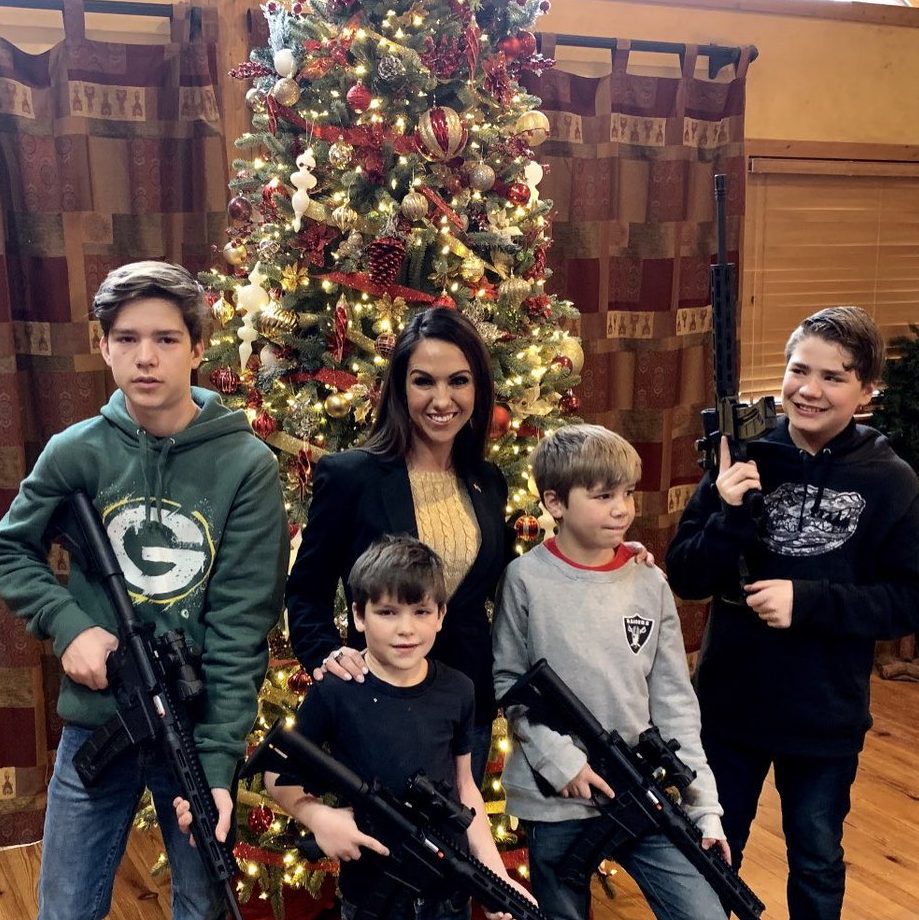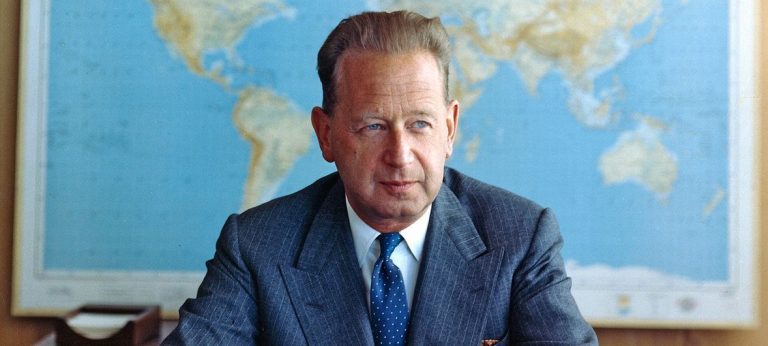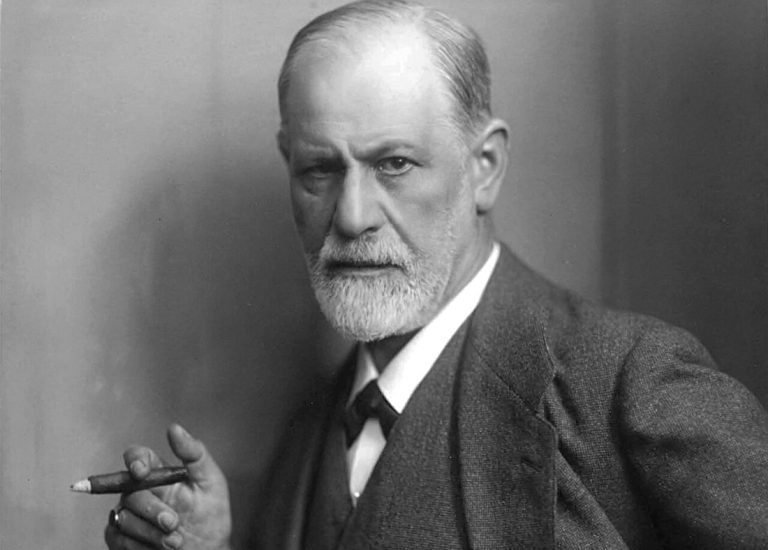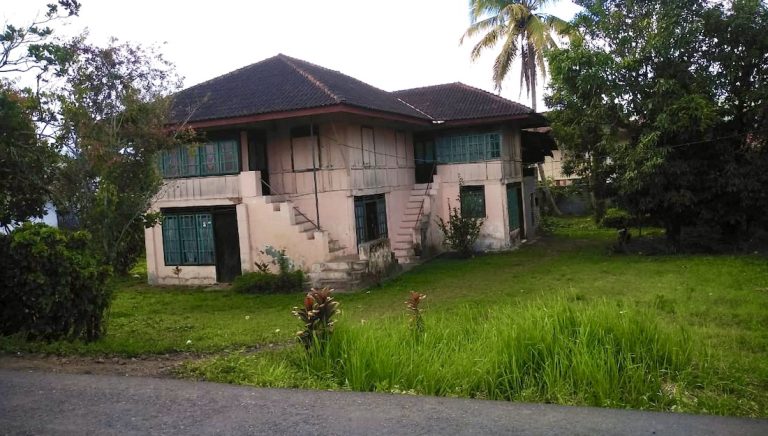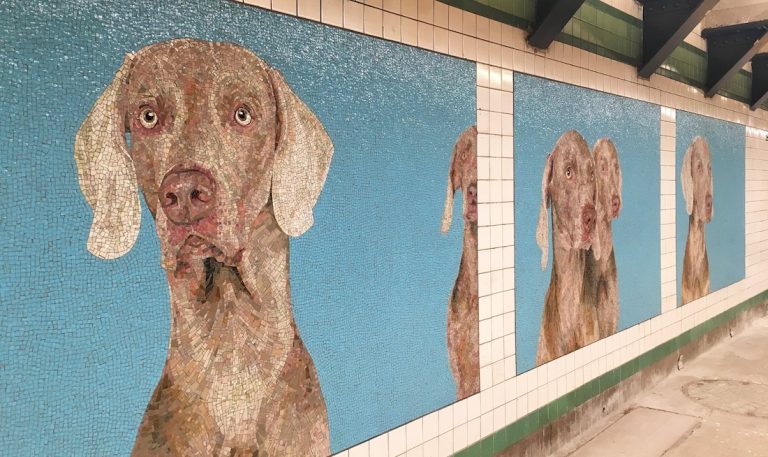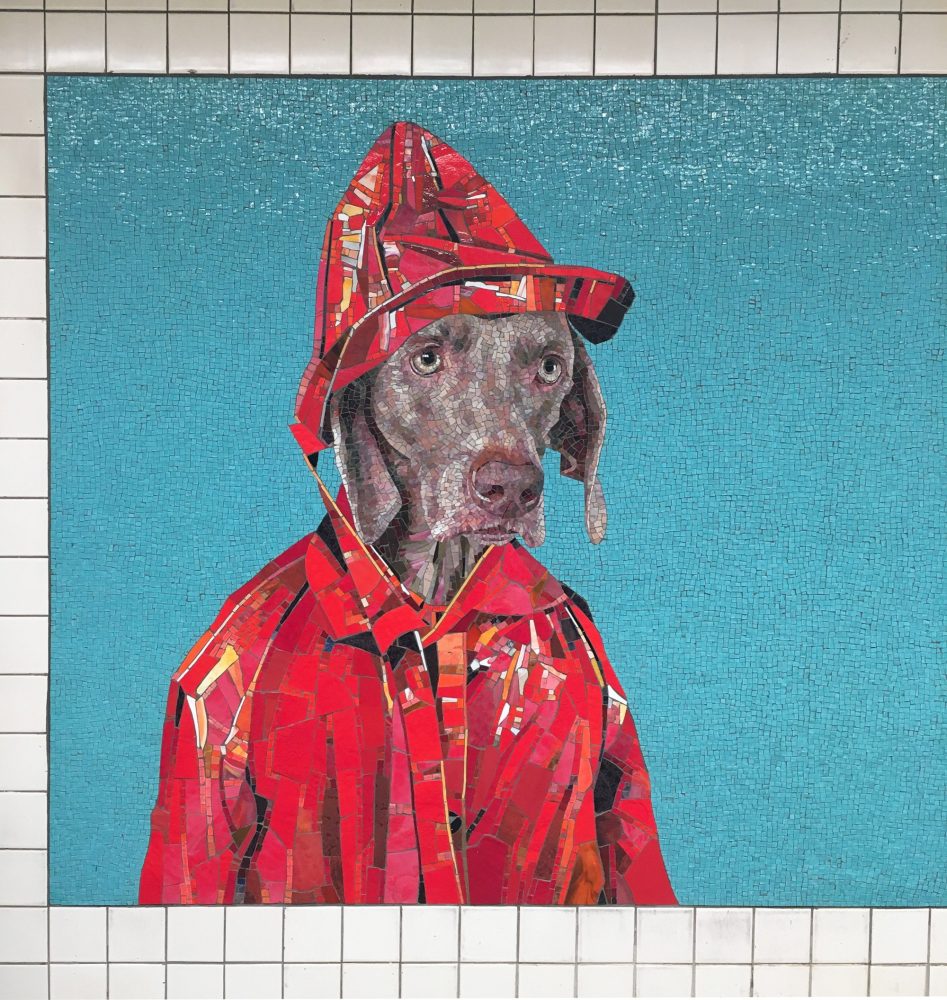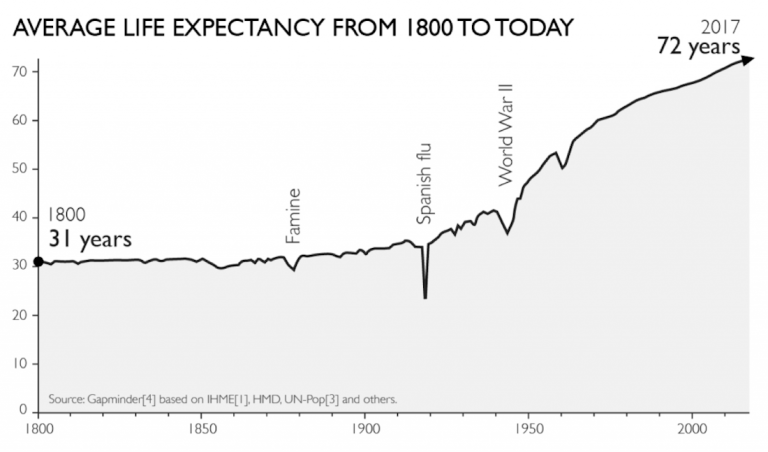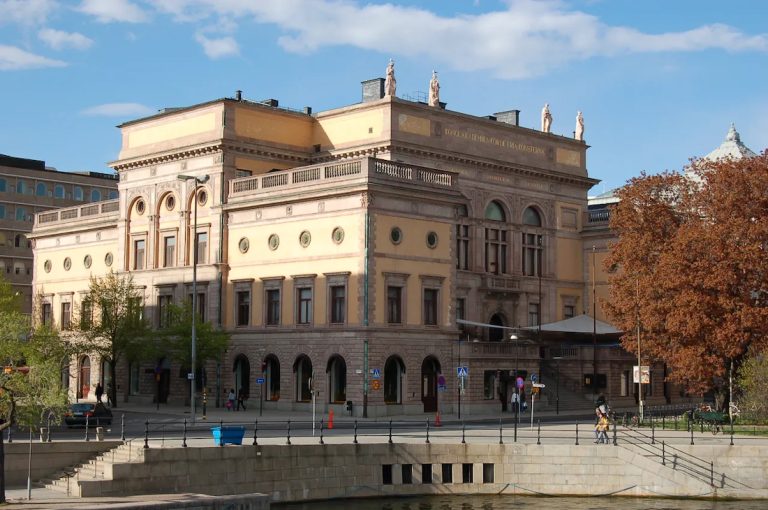Mumbai
xx

Train station in Mumbai
Train station. Mumbai, India. With the help of the World Bank, Mumbai is revamping its transportation systems, embarking on one of the most ambitious infrastructure projects in the world. Photo: Simone D. McCourtie / World Bank Photo ID: SDM-IN-069 World Bank

Exterior of a residential building
Mumbai, India. Photo: Simone D. McCourtie / World Bank Photo ID: SDM-IN-061 World Bank

Pedestrian walkway of a train station in Mumbai
Train station. Mumbai, India. Photo: © Simone D. McCourtie / World Bank Photo ID: SDM-IN-063 World Bank
Unimpressed, then an Admirer, of Former U.N. Secretary General Ban Ki-moon
xxx
New York, N.Y. When I first met U.N. Secretary General Ban Ki-moon at Riverside Church…
Unimpressed, then an Admirer, of Former U.N. Secretary General Ban Ki-moon (May 8, 2022)
Follow Jim Luce on Facebook, Instagram, LinkedIn, TikTok, and X (Twitter).
© 2024 The Stewardship Report on Connecting Goodness – Towards Global Citizenship is published by The James Jay Dudley Luce Foundation Supporting & Educating Young Global Leaders is affiliated with Orphans International Worldwide, Raising Global Citizens. If supporting youth is important to you, subscribe to J. Luce Foundation updates here.
Awkward Dinner with a Drug Lord, Also President of Honduras
Awkward dinner with the President of Honduras who pretended to be interested in our support of orphan care in his country.
#Honduras,#JuanOrlandoHernandez.
New York, N.Y. I find myself at times in awkward situations. So it was at the Soho dinner once with Juan Orlando Hernandez, then president of Honduras and later arrested… We discussed possibility of Orphan International Worldwide operating in Honduras–the purpose of my attending the dinner–and he mouthed platitudes but seemed as phony as a two-peso bill.
Juan Orlando Hernández abused his position as President of Honduras to operate the country as a narco-state where violent drug traffickers were allowed to operate with virtual impunity, and the people of Honduras and the United States were forced to suffer the consequences,” said Attorney General Merrick B. Garland. “As today’s conviction demonstrates, the Justice Department is disrupting the entire ecosystem of drug trafficking networks that harm the American people, no matter how far or how high we must go.”
“When the leader of Honduras and the leader of the Sinaloa Cartel work hand-in-hand to send deadly drugs into American communities, both deserve to be held accountable in the United States,” said Administrator Anne Milgram of the Drug Enforcement Administration (DEA). “This case should send a clear message that no one is above the law or beyond our reach.”
“Juan Orlando Hernández had every opportunity to be a force for good in his native Honduras. Instead, he chose to abuse his office and country for his own personal gain and partnered with some of the largest and most violent drug trafficking organizations in the world to transport tons of cocaine to the United States,” said U.S. Attorney Damian Williams for the Southern District of New York. “It is my sincere hope that this conviction sends a message to all corrupt politicians who would consider a similar path: choose differently. My office will stop at nothing to investigate and prosecute those responsible for sending poison to this community, no matter their status or political power.”
According to court documents, from at least in or about 2004, up to and including in or about 2022, Hernández, the former two-term president of Honduras and former president of the Honduran National Congress, was at the center of one of the largest and most violent drug-trafficking conspiracies in the world. Hernández abused his position and authority in Honduras to facilitate the importation of tons of cocaine into the United States. In exchange, Hernández received millions of dollars in drug money from some of the largest and most violent drug-trafficking organizations in Honduras, Mexico, and elsewhere, and used those bribes to fuel his rise in Honduran politics.
Throughout his time in office, Hernández publicly promoted legislation and the efforts he purported to undertake in support of anti-narcotics measures in Honduras. At the same time, he protected and enriched the drug traffickers in his inner circle and those who provided him with cocaine-fueled bribes that allowed him to obtain and stay in power in Honduras. For example, Hernández selectively upheld extraditions by using his executive power to support extraditions to the United States of certain drug traffickers who threatened his grip on power, and promising drug traffickers who paid him and followed his instructions that they would remain in Honduras. In addition, Hernández and his co-conspirators abused Honduran institutions, including the Honduran National Police and Honduran Army, to protect and grow their conspiracy. Among other things, members of the conspiracy used heavily armed Honduran National Police officers to protect their cocaine loads as they transited through Honduras. Members of the conspiracy also turned to violence and murder to protect and grow their drug trafficking enterprise, attacking and murdering rival traffickers and those who threatened their grip on the Honduran cocaine trade.
Several of Hernández’s co-conspirators have already been convicted and sentenced in connection with this investigation. Among others, Hernández’s brother, Juan Antonio Hernández Alvarado, also known as Tony Hernández, was convicted after trial in October 2019 and sentenced to life in prison, and Geovanny Fuentes Ramirez, a violent cocaine trafficker who met with Hernández on multiple occasions to discuss their drug trafficking partnership, was convicted after trial in March 2021, and sentenced to life in prison. More recently, Juan Carlos Bonilla Valladares, also known as El Tigre, the former chief of the Honduran National Police, pleaded guilty to his participation in the cocaine importation conspiracy and is scheduled to be sentenced on June 25, and Mauricio Hernández Pineda, a former member of the Honduran National Police and Hernández’s cousin, pleaded guilty to his participation in the cocaine importation conspiracy and is scheduled to be sentenced on May 2.
In total, Hernández and his co-conspirators trafficked over more than 400 tons of U.S.-bound cocaine through Honduras during Hernández’s tenure in the Honduran government.
Hernández was convicted of three counts: (i) conspiring to import cocaine into the United States, which carries a mandatory minimum sentence of 10 years in prison and a maximum sentence of life in prison; (ii) using and carrying machineguns and destructive devices during, and possessing machineguns in furtherance of, the cocaine-importation conspiracy, which carries a mandatory consecutive prison term of 30 years; and (iii) conspiring to use and carry machineguns and destructive devices during, and possessing machineguns in furtherance of, the cocaine-importation conspiracy, which carries a maximum sentence of life in prison.
The DEA’s Special Operations Division Bilateral Investigations Unit, Organized Crime Drug Enforcement Task Forces (OCDETF) New York Strike Force, and Tegucigalpa Country Office are investigating the case. The Justice Department’s Office of International Affairs provided valuable assistance in securing his arrest and extradition. The Justice Department thanked the Government of Honduras for extraditing Hernández to the United States.
Follow Jim Luce on Facebook, Instagram, LinkedIn, TikTok, and X (Twitter).
© 2024 The Stewardship Report on Connecting Goodness – Towards Global Citizenship is published by The James Jay Dudley Luce Foundation Supporting & Educating Young Global Leaders is affiliated with Orphans International Worldwide, Raising Global Citizens. If supporting youth is important to you, subscribe to J. Luce Foundation updates here.
.
My Neighbor and Mentor, the Episcopal Bishop Paul Moore of New York
Rt. Rev. Paul Moore, Episcopal Bishop of New York, assisting Richard Yao, Esq. and me fight of an attack on our organization, 1988.
xxx
The Rt. Rev. Paul Moore, Episcopal Bishop of New York, assisting attorney Richard Yao and me fight of an attack of the IRS under Ronald Reagan to our organization Fundamentalists Anonymous, 1988.
xxx
Follow Jim Luce on Facebook, Instagram, LinkedIn, TikTok, and X (Twitter).
© 2024 The Stewardship Report on Connecting Goodness – Towards Global Citizenship is published by The James Jay Dudley Luce Foundation Supporting & Educating Young Global Leaders is affiliated with Orphans International Worldwide, Raising Global Citizens. If supporting youth is important to you, subscribe to J. Luce Foundation updates here.
Congressmember Carolyn B. Maloney
[draft]
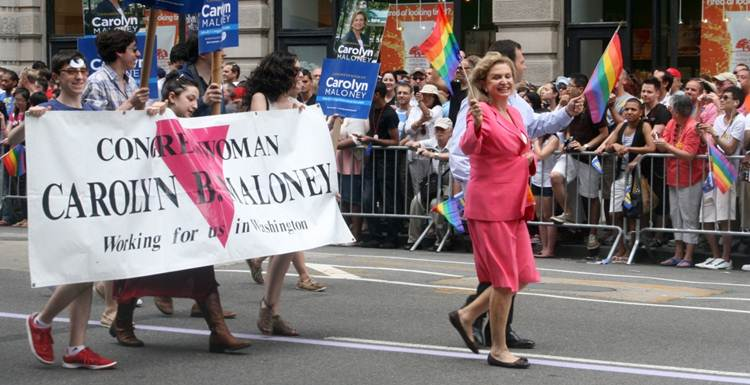
NYC Gay Pride Parade 2011 Unlike Others — NYS Marriage — Until 2013 with U.S. Supreme Court!
Two years ago, just before Gay Pride Sunday, NYS allowed same-sex marriage. This year, just before the parade, the U.S. Supreme Court granted NYS & all other states that allow such marriage Federal rights. Amazing and Fantastic.

xxx
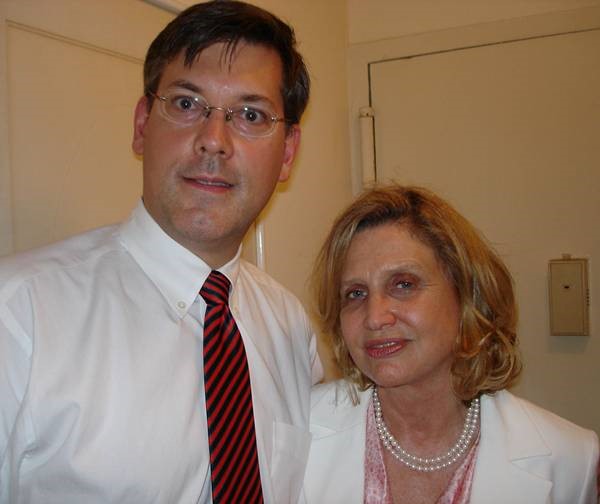
xxxx

Above:
Congressmember Carolyn B. Maloney
Follow Jim Luce on Facebook, Instagram, LinkedIn, TikTok, and X (Twitter).
© 2024 The Stewardship Report on Connecting Goodness – Towards Global Citizenship is published by The James Jay Dudley Luce Foundation Supporting & Educating Young Global Leaders is affiliated with Orphans International Worldwide, Raising Global Citizens. If supporting youth is important to you, subscribe to J. Luce Foundation updates here.
Remembering Effervescent Sexpert Dr. Ruth Westheimer
Sexpert Dr. Ruth Westheimer was a regular on Manhattan’s gala scene.
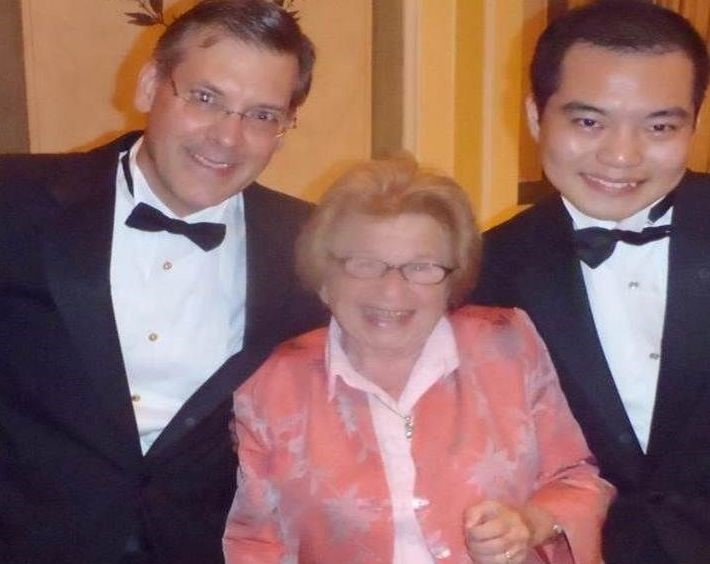
xxx
Follow Jim Luce on Facebook, Instagram, LinkedIn, TikTok, and X (Twitter).
© 2024 The Stewardship Report on Connecting Goodness – Towards Global Citizenship is published by The James Jay Dudley Luce Foundation Supporting & Educating Young Global Leaders is affiliated with Orphans International Worldwide, Raising Global Cit
Mario Vargas Llosa on the End of the Incan Empire at the Americas Society
Vargas Llosa speaks about Barack Obama’s Nobel Prize, the state of literature, inter-American relations and politics.
With a panel of preeminent scholars and the great Peruvian writer Mario Vargas Llosa, the Americas Society concluded a CUNY symposium entitled Inca Garcilaso de la Vega and his Royal Commentaries: A Reading for the 21 Century in their elegant Park Avenue headquarters.
New York, N.Y. Four hundred years ago an Inca princess borethe son of a Spanish Conquistador. Theirchild, Inca Garcilaso de la Vega, grew up to write the first Spanish-Americanmasterpiece, The RoyalCommentaries (Comentarios reales).
“Comentarios reales” tell the incredible story of the Inca world turned
upside down.
The Royal Commentaries, published inLisbon in 1609 before the Pilgrims landed at Plymouth, tell the incrediblestory of the Inca world destroyed as the Spanish concluded their bloodyconquest of Peru.
There was a backlash to the excesses of
Iberian power. According to The Royal
Commentaries:
The mestizos,the sons of the conquerors of the empire by the Indian women, were… accused ofhaving conspired with Prince Túpac Amaru and theother Incas to rise in revolt…
All those ofCuzco of 20 years or more and capable or bearing arms were arrested. Somewere condemned to torture.
As the Spanish prepared to execute the
prince in Cuzco, leader of the Inca nation, 300,000 people watched.
The majority of the population there was
indigenous, vastly outnumbering the Spanish colonizers, and they were very
angry.
The Inca raisedhis right arm with his hand open, then brought it to his ear, and dropped itgradually to his thigh.
From this, theIndians understood that they were being told to be silent and the shouting andcrying ceased, as they became so quiet that it seemed as if there was not aliving soul in the whole city, to the great astonishment of the Spaniards…
In controlling his own people, Túpac showedthat he was the legitimate and moral ruler of Peru. However, power oftentrumps morality, and the civilization based in Cusco was over.
As a boy, Mario Vargas Llosa told the standing
room-only crowd in Spanish, he read The Commentaries but felt
little. At the university, however, he got it. He felt connected to
the epic book.
“I read it and re-read it. I wasamazed at the incredible antidotes of ancient times. I could taste the colors of the words,” hesaid in Spanish.
Mario pointed out how the language used in TheCommentaries was a “revolutionary act,” as it combined the softness ofQuechua – the Inca language – with the European’s Spanish, creating a hybridthat changed not only Peru but the world.
“Underneath this new language hybrid was afeeling of richness and melancholy,” the author explained. This newSpanish captured the mestizo’s world and became used universally.
ADVERTISEMENT
As an adult, he can now see that the bookexpressed an ideology of a Latin American identity, of a nationalism not tryingto subjugate others, but to unify them.
The evening was launched by a welcome by SusanL. Segal, president and C.E.O. of the Americas Society. Susan came to the Society as a Partner andthe Latin American Group Head at JPMorgan Partners/Chase Capital Partners.
The distinguished session, chaired by AlfredMac Adam, explained Comentarios reales from their respective academicperspectives.
Dr. Juan Ossio ofthe Pontificia Universidad Católica del Peru explained the Inca myths of humanorigins described in the book.
Dr. MargaritaZamora of the University of Wisconsin in Madison spoke of the book’s portrayalof colonialization.
Dr. Thomas Wardof Loyola University in Maryland discussed modern nativist readings ofGarcilaso in Peru.
The symposium co-organizer is DanielShapiro, Director of the Literature Department at the Americas Society.
ADVERTISEMENT
An hour long interview in Spanish betweenMario Vargas Llosa and Dr. Raquel Chang-Rodríguez followed. Raquel, who organized the event, isDistinguished Professor at the City College-Graduate Center of CUNY.
The event wasco-organized by Daniel Shapiro, Director of Literature at the Americas Society.
A book
collecting the symposium’s papers will be edited by Dr. Raquel Chang-Rodríguez.
Mario Vargas is one of the world literature’s most important novelists.
Some critics consider him to have had a larger international impact and
worldwide audience than any other writer of the Latin American Boom. A thought leader in literature and literary
criticism.
A global citizen, he holds a Spanish
passport and lives between Lima and London.
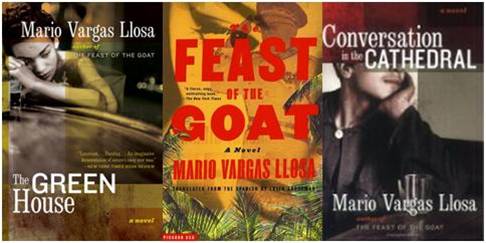
Like many Latin American authors, VargasLlosa has been politically active throughout his career. Like most LatinAmerican intellectuals, he supported Castro in the early 1960s, but graduallybecame disenchanted.
Vargas Llosa ran for the Peruvianpresidency in 1990 with the center-right Frente Democrático coalition,advocating neoliberal reforms. He has subsequently supported moderate conservativecandidates.
Dignified, intelligent, intellectual, withgray hair and gray tie, Mario reminded me of Walter Cronkite, circa 1975. He appeared trustworthy, sober, thoughtful, compassionate – and humorous.
ADVERTISEMENT
Associated with the Boom avant-garde literarymovement in Latin America in the 1960s through such masterworks as The GreenHouse, Conversations in the Cathedral, and The Feast of the Goat,he has written numerous other novels. Healso writes essays, plays, and works of literary criticism.
Under theeditorship of Raquel Chang-Rodríguez, a book collecting all papers presented atthe symposium will appear in April by the Fondo Editorial of thePontificia Universidad Católica del Peru.
A special issueof Review: Literature and Arts of the Americasfocusing on the Inca Garcilaso and His Legacy, will be published in Novemberand launched at the Society on November 12, 2009. Reviewis published by Routledge on behalf of the Society. (Info here)
The Americas Society where he spoke is thepremier forum dedicated to education, debate, and dialogue in the Americas. The room sparkled under crystal chandeliers,the well-dressed audience reflected in its gilded mirrors.
The Americas Society where he spoke is the premier forum for the Americas.
In 1965, a group of noted businessmen led by David Rockefeller founded the
Center for Inter-American Relations. As
the Center’s mission was articulated in 1970, “Ignorance of our neighbors is
neither sensible nor safe, neither smart nor neighborly, neither good
economics, nor good manners…”
ADVERTISEMENT
The Center for Inter-American Relations wasabsorbed into the Americas Society in 1985. Since that time, the Americas Society hasplayed a pivotal role in disseminating the cultural achievements of LatinAmerica, the Caribbean, and Canada in the U.S.
Its mission is to increase public awarenessand appreciation of the diverse cultural heritage of the Americas, as well asthe importance of the inter-American relationship.
Mario Vargas, one of the world’s most important novelists, explains a
finer point to me.
I asked Vargas Llosa what he thought of Barack Obama winning the Nobel PeacePrize. He admitted he was as surprisedas anyone, and believed that the prize was awarded for what the world hopeswill be, not what is.
I believe that Vargas Llosa fans around theworld will not be surprised the morning he is awarded the Nobel Prize forLiterature.
Inca Garcilaso de la Vega’s Coat of Arms.
Note: Any inaccuracies in this piece stemfrom my own inadequacies with the Spanish language. Although I lived in Bogotá for a semester incollege and have visited Lima on occasion, Spanish remains my sixth language. My appreciationto Doris Cramer, Dania Junco, and John Lee.
Follow Jim Luce on Facebook, Instagram, LinkedIn, TikTok, and X (Twitter).
© 2024 The Stewardship Report on Connecting Goodness – Towards Global Citizenship is published by The James Jay Dudley Luce Foundation Supporting & Educating Young Global Leaders is affiliated with Orphans International Worldwide, Raising Global Citizens. If supporting youth is important to you, subscribe to J. Luce Foundation updates here.
From Telemundo to MSNBC, José Díaz-Balart Shines
With Telemundo’s José Díaz-Balart with the author at Tenth Annual Hispanic Television Summit, Oct. 3, 2012 in NYC.
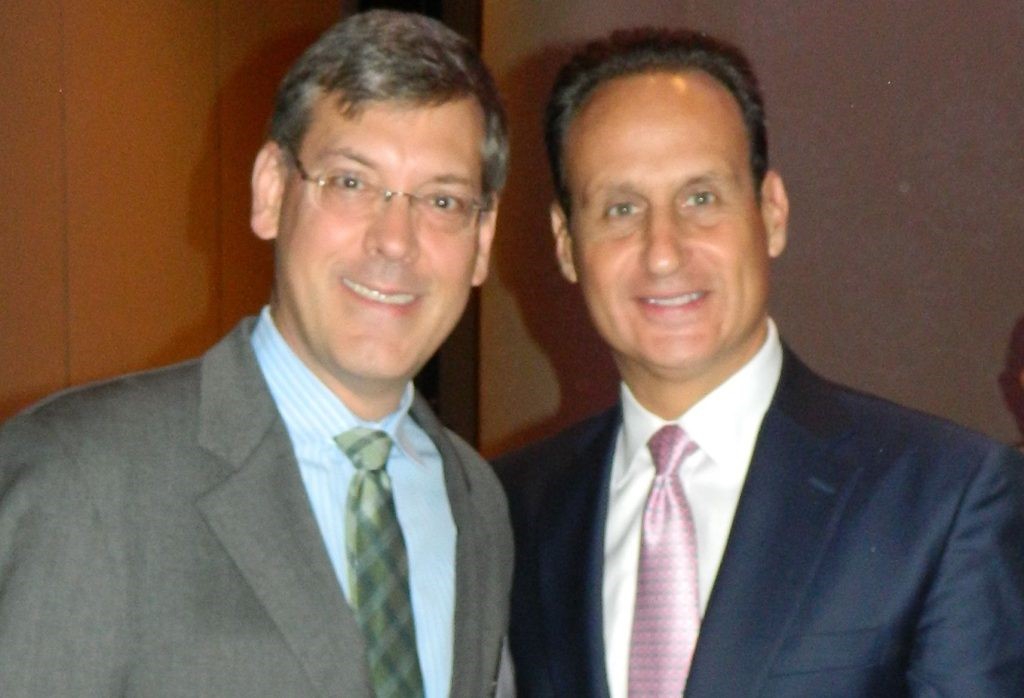
Giants Gather: Remembering Meeting Broadcaster Dick Cavett
Giants of Broadcasting gala illuminates timeless craftsmanship in television storytelling
New York, N.Y. — The cocktail chatter inside the Museum of Broadcast Communications’ glittering ballroom felt like finely tuned background music the night I met legendary talk‑show host Dick Cavett at the Giants of Broadcasting & Electronic Arts Awards in October 2013.
I was there to chronicle the evening for the Broadcasting & Cable Hall of Fame but soon found myself swept into a living archive of broadcast history—surrounded by the voices, faces, and fearless spirits that helped define American television.
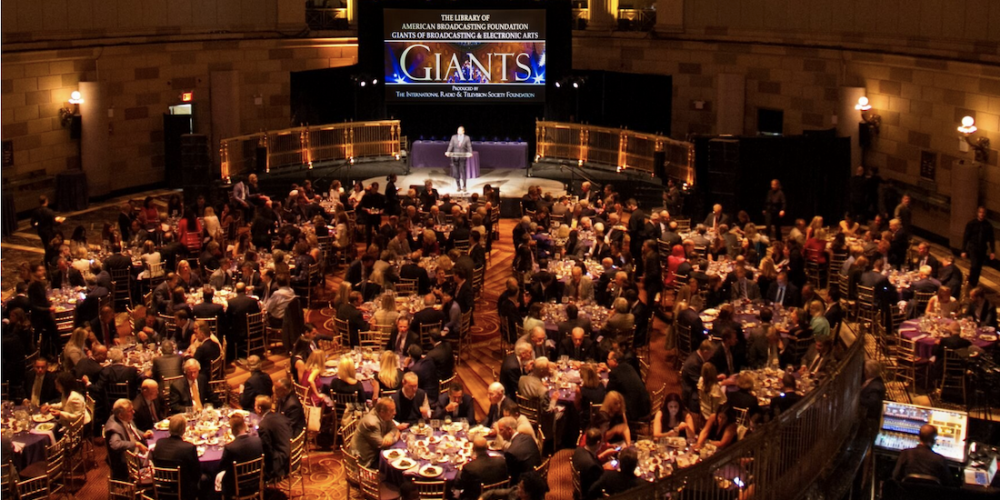
The Moment of Arrival
Cavett glided through the doors precisely at six, an elegant figure in a navy blazer and signature wry smile. He was the “who” I most wanted to meet—an interviewer who’d matched wits with everyone from John Lennon to Katharine Hepburn. The “what” was the annual awards dinner honoring industry trailblazers.
The “when” was a crisp October evening, framed by Manhattan’s early‑fall glow. The “where” was Gotham Hall, its soaring Corinthian columns shimmering under chandeliers. And the “why”? To celebrate broadcast pioneers whose curiosity and craft still elevate public discourse.

Cavett’s Quiet Charisma
I introduced myself as the room hushed for seating. Cavett’s hand‑shake was light, his eye contact unwavering.
He spoke softly, almost conspiratorially, about the night’s honoree, the late David Brinkley, whom he called “a masterclass in measured emphasis.”
Cavett lamented that contemporary interviews often “rush past the silence where revelations live.”
His words reminded me why mentorship—implicit or explicit—matters in media.

A Constellation of Storytellers
As dinner was served, I rotated among tables populated by giants: Lesley Stahl, Charlie Rose, and executive Fred Silverman.
Each recounted how Cavett’s long‑form conversations expanded the boundaries of television. Their anecdotes painted Cavett as both craftsman and crusader for nuance—an antidote to sound‑bite culture.
Lessons in Listening
Later, backstage, Cavett confided that his Nebraska upbringing taught him “to let people finish a thought before you hurry them toward the next.”
That Midwestern patience, he believed, birthed his most revealing on‑air moments. Listening, he said, is a radical act—one our industry must recover if it hopes to serve democracy.
Legacy and Responsibility
When Cavett accepted his award, he bypassed nostalgia to urge young producers to “stay curious, stay civil, and stay hungry for depth.” The applause lingered—an audible pledge to stewardship. Walking into the night air, I realized meeting Cavett recalibrated my own compass: good journalism isn’t merely about asking questions; it’s about granting space for answers.
75‑Word Audio Summary
At the 2013 Giants of Broadcasting Awards in New York City, I met iconic talk‑show host Dick Cavett. Amid luminaries like Lesley Stahl and Charlie Rose, Cavett’s quiet charisma highlighted the power of patient listening. His backstage reflections on curiosity and civility reframed my understanding of journalism’s purpose. The evening celebrated pioneers who shaped television and challenged attendees to safeguard depth in media. Cavett’s legacy: an urgent reminder that great interviews begin with generous silence.
#GiantsOfBroadcasting #DickCavett #BroadcastHistory #MediaLegends #RadicalListening
Tags: Dick Cavett, Giants of Broadcasting, Broadcasting Awards, Television History,
Interview Techniques, Media Ethics, Radical Listening, Journalism
Social Media Blurbs
X / Twitter
Giants Gather: Remembering Meeting Dick Cavett in 2013—how one evening underscored the art of listening. #GiantsOfBroadcasting #MediaLegends bit.ly/3xyzCvt
Bluesky
Giants Gather: Remembering Meeting Dick Cavett in 2013. A behind‑the‑scenes look at broadcast legends and lessons in radical listening. #GiantsOfBroadcasting #BroadcastHistory bit.ly/3xyzCvt
LinkedIn
Giants Gather: Remembering Meeting Dick Cavett in 2013 explores how the Giants of Broadcasting Awards honor depth in storytelling. Cavett’s reflections on patient interviewing offer a roadmap for today’s media professionals seeking authenticity and civility. #GiantsOfBroadcasting #MediaEthics Read more: https://www.stewardshipreport.org/giants‑gather‑cavett‑2013
Truth Social
Giants Gather: Remembering Meeting Dick Cavett in 2013 spotlights timeless interview craft. #BroadcastHistory https://www.stewardshipreport.org/giants‑gather‑cavett‑2013
Mastodon
Giants Gather: Remembering Meeting Dick Cavett in 2013—personal reflections from the Giants of Broadcasting gala. Discover Cavett’s advice on curiosity and civility. Join the conversation! #MediaLegends https://www.stewardshipreport.org/giants‑gather‑cavett‑2013
Instagram
Giants Gather: Remembering Meeting Dick Cavett in 2013—step backstage at the Giants of Broadcasting Awards and rediscover the art of listening. Link in bio.
#GiantsOfBroadcasting #DickCavett #BroadcastHistory #RadicalListening #NYC
Facebook
Giants Gather: Remembering Meeting Dick Cavett in 2013 offers a first‑person journey into the Giants of Broadcasting Awards. Learn how Cavett’s emphasis on listening can elevate today’s conversations. #GiantsOfBroadcasting #MediaLegends https://www.stewardshipreport.org/giants‑gather‑cavett‑2013
Reddit
Giants Gather: Remembering Meeting Dick Cavett in 2013 recounts a night among broadcast icons. How has patient listening shaped your view of modern media? #BroadcastHistory https://www.stewardshipreport.org/giants‑gather‑cavett‑2013
Dan Rather
xxx

Video: J.Luce Foundation India’s Saraswati Centre Opening, Bihar, April 2022
419 subscribers | April 29, 2022
Video: J. Luce Foundation India’s Saraswati Centre Opening, Bihar (April 29, 2022)
Saraswati Centre Opening, Bihar, India | Local News
A Project of the J. Luce Foundation India
Saraswati Centre Opening, Bihar, India – Local News – 4-29-22 (Bodhgaya)
Bihar, India, Adjacent to the second bodhi tree under which Lord Buddha sat on his path toward Enlightenment stands the Saraswati Centre in Bodhgaya. The Centre is named after the Hindu and Buddhist God for culture and education. In attendance were:
- Dr. Kazuko Hillyer Tatsumura of Gaia Holistic Foundation, NYC
- Bix & Jim Luce, J. Luce Foundation, NYC & Orphans International Worldwide, NYC
Remembering Thích Nhất Hạnh (1926-2022)
Thich Nhat Hanh, the Vietnamese Buddhist monk and founder of the Engaged Buddhism movement, died January 22 in his home country of Vietnam. He was 95.
San Francisco, CA. One of the great Buddhist teachers of our time, Thich Nhat Hanh died today at Tu Hieu Pagoda in Vietnam, the Buddhist temple where he was ordained at age sixteen. Following his stroke in 2014, he had expressed a desire to return to his homeland, and, in October 2018, moved back to his home temple. There, he spent the last years of his life surrounded by his close disciples and students.
The International Plum Village Community of Engaged Buddhism released a statement announcing Nhat Hanh’s passing, followed by a schedule of live-streamed memorial ceremonies honoring their teacher to be broadcast through the week from Hue, Vietnam and Plum Village, France.
Nhat Hanh, affectionately referred to as “Thay,” by his students, has often been referred to as “the father of mindfulness.” In his 95 years, he made a global impact as a teacher, author, activist, and the founder of the Engaged Buddhism movement. His simple yet deeply profound teachings led countless people towards a life of mindfulness, joy, and peace.
Nhat Hanh suffered a brain hemorrhage in November 2014 and spent four-and-a-half months at a stroke rehabilitation clinic at Bordeaux University Hospital, after which he returned to Plum Village in France, where he was able to enjoy being “out in nature, enjoying the blossoms, listening to the birds and resting at the foot of a tree.” In July of 2015, Nhat Hanh traveled to the United States for intensive rehabilitation at San Francisco’s UCSF Medical Center. In January 2016, he returned again to Plum Village, France to be with the sangha, as shared in an update on his 92nd birthday.
In 2016, two months after his 90th birthday, Nhat Hanh expressed a wish to travel to Thailand to be closer to his homeland of Vietnam. He spent nearly two years at Thai Plum Village. In October 2018, Thich Nhat Hanh traveled to Vietnam to spend the remainder of his days at his root temple.
Nhat Hanh was born Nguyen Xuan Bao in Hué, Vietnam in October of 1926. Interested in Buddhism from an early age, he entered the monastery at Tu Hieu Temple in Vietnam at sixteen. There, he worked with his primary teacher, Zen master Thanh Quy Chan That. In 1951, Nhat Hanh was ordained as a monk after receiving training in Vietnamese Mahayana and Thien Buddhist traditions. It was then that he received the name Thich Nhat Hanh.
As Lindsay Kyte reported for Lion’s Roar in “The Life of Thich Nhat Hanh,” Nhat Hanh was sent for training at a Buddhist academy but was dissatisfied with the curriculum, wanting to study more modern subjects. He left for the University of Saigon, where he could study world literature, philosophy, psychology, and science in addition to Buddhism. He went on to begin his activist work, founding La Boi Press and the Van Hanh Buddhist University in Saigon. He also founded the School of Youth for Social Service, a neutral corps of Buddhist peace workers who established schools, built healthcare clinics, and rebuilt villages in rural areas.
Nhat Hanh accepted a fellowship to study comparative religion at Princeton University in 1960 and was subsequently appointed a lecturer in Buddhism at Columbia University. He had become fluent in English, Japanese, Chinese, Sanskrit, Pali, and English.
In 1963, a U.S.-backed military coup had overthrown the Diem regime, and Nhat Hanh returned to Vietnam to continue initiating nonviolent peace efforts. He submitted a peace proposal to the Unified Buddhist Church (UBC), calling for a cessation of hostilities, the establishment of a Buddhist institute for the country’s leaders, and the creation of a center to promote nonviolent social change.
The founding of the Engaged Buddhism movement was his response to the Vietnam War.
Nhat Hanh’s mission was to engage with the suffering caused by war and injustice and to create a new strain of Buddhism that could save his country. In the formative years of the Engaged Buddhism movement, Nhat Hanh met Cao Ngoc Phuong, who would later become Sister Chan Kong. She hoped to encourage activism for the poor in the Buddhist community, and worked closely with Nhat Hanh to do so. She remained his closest disciple and collaborator for the remainder of his life.
In 1966, Nhat Hanh returned to the U.S. to lead a symposium at Cornell University on Vietnamese Buddhism. There, he met with Dr. Martin Luther King, Jr. and asked King to denounce the Vietnam War. Dr. King granted the request the following year with a speech questioning America’s involvement in the war. Soon after, he nominated Nhat Hanh for the Nobel Peace Prize. “I do not personally know of anyone more worthy of [the prize] than this gentle monk from Vietnam. His ideas for peace, if applied, would build a monument to ecumenism, to world brotherhood, to humanity,” he wrote.
In June of that year, Nhat Hanh presented a peace proposal in Washington urging Americans to stop bombing Vietnam, emphasizing that he and his followers favored neither side in the war and wanted only peace. In response, Nhat Hanh was exiled from Vietnam. He was granted asylum in France, where he became chair of the Vietnamese Buddhist Peace Delegation.
Nhat Hanh was the head the Order of Interbeing, a monastic and lay group that he founded in 1966. In 1969, he also founded the Unified Buddhist Church, and later in 1975, formed the Sweet Potatoes Meditation Center southeast of Paris, France. As the center grew in popularity, Nhat Hanh and Sister Chan Khong founded Plum Village, a vihara (Buddhist monastery) and Zen center, in the South of France in 1982.
In 1987, he founded Parallax Press in California, which publishes his writings in English. He established Deer Park Monastery in Southern California, his first monastery in America, in 2000. Since then, many dharma centers across the U.S., serving tens of thousands of lay students, have been established as part the Order of Interbeing.
After negotiations, the Vietnamese government allowed Nhat Hanh, now a well-known Buddhist teacher, to return to Vietnam for a visit in 2005. He was able to teach, publish four books in Vietnamese, travel the country, and visit his root temple. Although his first trip home stirred controversy, Nhat Hanh was allowed to return again in 2007 to support new monastics in his Order, organize chanting ceremonies to heal wounds from the Vietnam War, and lead retreats for groups of up to 10,000.
“We gauge the greatness of spiritual teachers by the depth, breadth, and impact of their teachings, and by the example their lives set for us. By all these measures, Thich Nhat Hanh is one of the leading spiritual masters of our age,” writes Lion’s Roar editor-in-chief Melvin McLeod in his introduction to The Pocket Thich Nhat Hanh.
In his lifetime, Nhat Hanh authored more than 100 books, which have been translated into 35 languages, on a vast range of subjects — from simple teachings on mindfulness to children’s books, poetry, and scholarly essays on Zen practice. His most recent book, Zen and the Art of Saving the Planet, was published by HarperCollins in October 2021. His community consists of more than 600 monastics worldwide, and there now exists more than 1000 practice communities attended by his dedicated sangha across North America and Europe.
It is estimated that Nhat Hanh created over 10,000 works of calligraphy in his life, each sharing unique, simple messages: “Breathe, you are alive”; “Happiness is here and now”; “Present moment, wonderful moment”; “Wake up; It’s now”; “This is it”. His life itself was a meditation in action, creating peace with every step.
In a newsletter to the community, Plum Village shared that starting Saturday, January 22, the global community is invited to come together online to commemorate Thich Nhat Hanh’s life and legacy. Plum Village will broadcast five days of practice and ceremonies live from Hue, Vietnam and Plum Village, France. More details can be found on their website.
“Now is a moment to come back to our mindful breathing and walking, to generate the energy of peace, compassion, and gratitude to offer our beloved Teacher. It is a moment to take refuge in our spiritual friends, our local sanghas and community, and each other,” Plum Village writes.
In his book, At Home in the World, published in 2016, Nhat Hanh addressed his inevitable death. He wrote:
This body of mine will disintegrate, but my actions will continue me… If you think I am only this body, then you have not truly seen me. When you look at my friends, you see my continuation. When you see someone walking with mindfulness and compassion, you know he is my continuation. I don’t see why we have to say “I will die,” because I can already see myself in you, in other people, and in future generations.
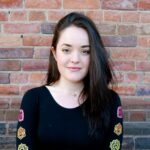
Even when the cloud is not there, it continues as snow or rain. It is impossible for the cloud to die. It can become rain or ice, but it cannot become nothing. The cloud does not need to have a soul in order to continue. There’s no beginning and no end. I will never die. There will be a dissolution of this body, but that does not mean my death.
I will continue, always. – Lilly Greenblatt
Lilly Greenblatt is the digital editor of LionsRoar.com. You can find more about her at lillygreenblatt.com.
Stewardship Report Editor’s Note: Thich Nhat Hanh has been ranked 98/100 according to the Luce Index™.
Remembering Thich Nhat Hanh (1926-2022) (Jan. 21, 2022)
LGBTQ+ Adult Population Hits 20 Million: Human Rights Campaign
According to an analysis of data in the Census Bureau’s recent Household Pulse Survey, 8% of respondents identified themselves as LGBTQ+, suggesting previous surveys undercounted the population.
We Are Here: LGBTQ+ Adult Population in United States Reaches At Least 20 Million, According to Human Rights Campaign Foundation Report
by Laurel Powell • Human Rights Campaign
Washington, D.C. — Today, the Human Rights Campaign Foundation (HRC) released “We Are Here: Understanding the Size of the LGBTQ+ Community,” a report analyzing recent results from the U.S. Census Bureau’s Household Pulse Survey. Based on data from respondents in the Household Pulse Survey, a national household probability survey of adults in the United States, at least 20 million adults in the United States could be lesbian, gay, bisexual, or transgender – nearly 8% of the total adult population, almost double prior estimates for the LGBTQ+ community’s size. It also suggests that more than 1% of people in the United States identify as transgender, higher than any prior estimates. Additionally, it confirms prior research showing that bisexual people represent the largest single contingent of LGBTQ+ people, at about 4% of respondents.
While many attempts have been made to document the size and demographics of the LGBTQ+ community in America, they have faced significant challenges. Sampling is difficult and bias also plays a role in respondents’ answers. In the most comprehensive and often-cited study of the LGBTQ+ community prior to today’s report, the Public Religious Research Institute’s (PRRI’s) American Values Atlas suggested that 4.4% of Americans identified as LGBTQ+. Today’s estimates nearly double that number – and may still be an undercount.
“LGBTQ+ people are here – in every town, in every city, in each and every ZIP code. This data shows what we’ve suspected: our community is larger and more widespread than we could have known up to this point. We’re proud to bring this data to light and set the stage for a future where all the millions of LGBTQ+ people in America enjoy full legal and lived equality. I commend the Biden administration and the U.S. Census Bureau for finally allowing researchers to count us, and look forward to seeing the LGBTQ+ community counted in further studies.” – Joni Madison, Human Rights Campaign Interim President
Some top-line data points from HRC’s report include:
- Approximately 8% of respondents self-selected lesbian, gay, bisexual, or transgender when asked about their identity. A further 2% of participants “identify with a sexual orientation other than lesbian, gay, bisexual, or straight.” This could encompass a number of other orientations such as pansexual, asexual, and others.
- Data suggests more than 1%, or more than 2 million, people identify as transgender – an increase from prior estimates of approximately 1.4 million.
- Bisexual people made up the largest single demographic, at about 4% of respondents.
- California and Texas were the states with the largest number of LGBTQ+ adult residents, with an estimated 2.6 million and 1.7 million respectively.
- LGBTQ+ people live in every community in every state. States less populated than California and Texas may tend to have a higher percentage of their population that identify as LGBTQ+.
While this represents tremendous progress in ensuring quality data collection about the LGBTQ+ community in the United States, much more can be done. As detailed in HRC’s “Blueprint for Positive Change,” the Census Bureau’s two largest surveys – the American Community Survey and the decennial U.S. Census – still do not ask questions about respondents’ sexual orientation and gender identity (SOGI). Data from these surveys is used to allocate hundreds of billions of dollars of federal funding each year, and the absence of SOGI questions negatively impacts support for the LGBTQ+ community.
For additional information about why accurate data collection is imperative in the fight for LGBTQ+ equality, read HRC’s report, “LGBTQ+ Data Collection: A Life-Saving Imperative.” Additional information on the Household Pulse Survey can be found on the U.S. Census Bureau website. For more information on the HRC Foundation’s Public Education and Research Program, visit https://www.thehrcfoundation.org/about/public-education-research-program.
The Human Rights Campaign reports on news, events and resources of the Human Rights Campaign Foundation that are of interest to the general public and further our common mission to support the LGBTQ+ community.
Character Sketch: Dag Hammarskjöld, Second Secretary-General
By the age of thirty he was Under-Secretary of the Swedish Ministry of Finance, serving concurrently as the chairman of the Governors of the Bank of Sweden. Here, he developed the legendary self-discipline and application that later enabled him to master the enormous workload required of an activist Secretary-General of the United Nations.
The allegations of homosexuality put about by his predecessor Trygve Lie, and regurgitated from time to time by those who disliked or resented him, had no foundation. “Because it did not find a mate/They called/The unicorn perverted,” Hammarskjöld wrote in a haiku. He seemed to be asexual, admittedly a rare condition, and he obviously could not imagine sharing his life with another person. The arts were the true companions of his bachelor life.

New York, N.Y. Ralph Bunche, who was usually sparing with praise, once described Dag Hammarskjöld [Luce Index™ rank 98] as “the most remarkable man I have ever seen or worked with…” Hammarskjöld was certainly unique. When, in a haiku, he compared himself to a unicorn, he was not so far off the mark. He had been a prodigy since his childhood — an intellectual with an uncommon gift for public administration and practical statesmanship.
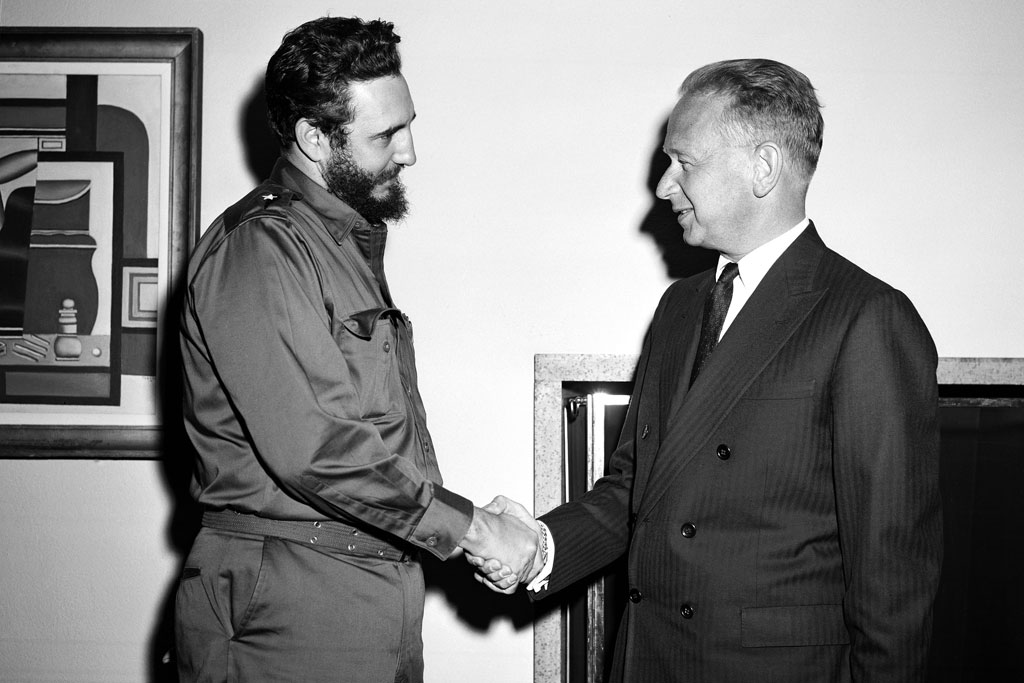
For all his success as a public servant in Sweden — head of the Foreign Office, Swedish representative in setting up the Organization for European Economic Cooperation and the Council of Europe — in his early years Hammarskjöld seems to have suffered from a nagging sense of lack of fulfillment. The theme of emptiness constantly recurs in the early pages of Markings, his spiritual diary, and with it the search for meaning, reality, a way to “transform the mirror into a doorway.” This search reached its conclusion in 1953 with his unexpected election as Secretary-General of the United Nations.
Hammarskjöld ruthlessly protected his privacy and his personal routine.
If, on tour in some distant place, he was for an hour or two relaxed, forthcoming and friendly, the mood would quickly pass. Those who tried to claim some special relationship were rebuffed. He often seemed to be indifferent to ordinary human feelings or weaknesses. Perhaps because he lacked experience of close personal relationships, he could make serious misjudgments of character, resulting in appointments that he later regretted.
He made no secret of his undoubted intellectual ascendancy and tended to lose interest in those who did not comprehend, and respond to, his practical idealism. He was unforgiving of mistakes or misunderstandings. He had a devastating if quiet temper that sometimes fell on innocent bystanders. He could be shrill in his indignation at those who he believed to be working against him.
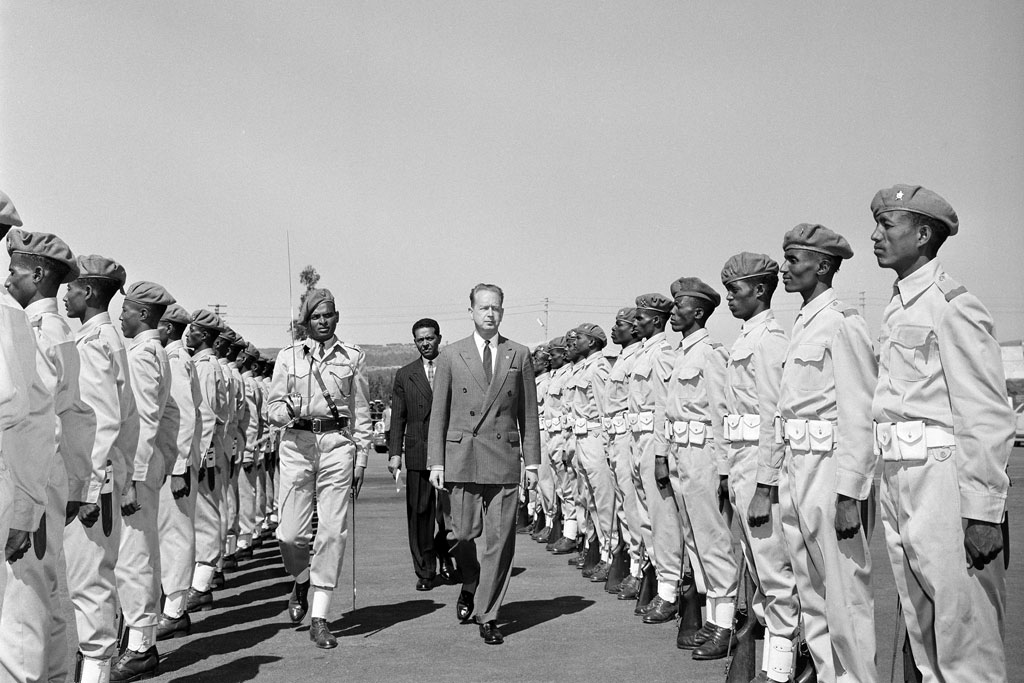
Hammarskjöld was not usually a companionable man, but he was certainly an extraordinary one, and we were all prepared —indeed anxious — to serve him without question to the limit of our powers and endurance. When he died in a plane crash in Africa, we grieved for him as for the most intimate of friends because we realized that working with Hammarskjöld was a privilege and an experience that would never come our way again.
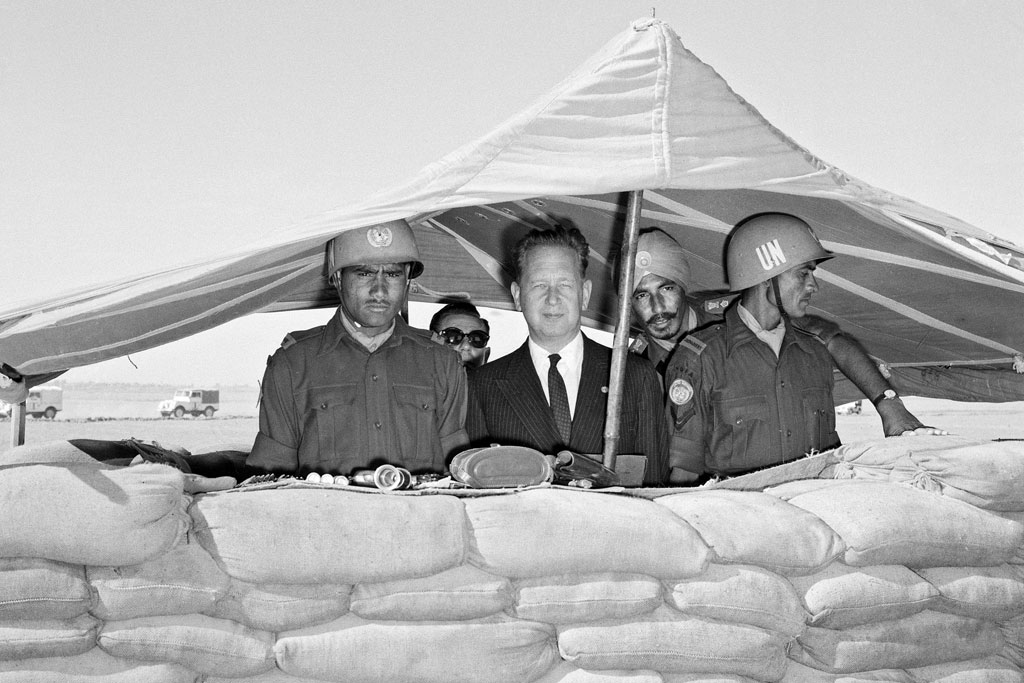
Some highlights from the career of Secretary-General Dag Hammarskjöld, the United Nations’ second top official who went to one to be awarded a Nobel Peace Prize after his untimely death in 1961. The Nobel Committe awarded him the prize posthumously “in gratitude for all he did, for what he achieved, for what he fought for: to create peace and goodwill among nations and men.” Credit: UN News
An intellectual in action is a fine sight. Watching Hammarskjöld tackling international crises had something in common with looking at a masterpiece or hearing a great performance. His honesty and integrity were absolute. Because stringent intellectual discipline enabled him to think through problems in advance, Hammarskjöld was usually several steps ahead of the people he was dealing with.
In negotiations he was particularly skillful at breaking an impasse between leaders bogged down in conflict. He had a phenomenal memory, a wide range of learning and an extraordinary capacity for marshaling and analyzing facts and trends. On a single Sunday afternoon in August 1961, he dictated to his assistant Hannah Platz his last and most important report to the U.N., a document of some 6,000 words setting out his position on the highly controversial issues of the time, without notes and without a pause. He made virtually no corrections to the original draft.
Hammarskjöld always seemed to know exactly what he was doing and where he was going, but it was sometimes not so easy to follow him.
Inability to keep up with his esoteric allusions, conceptual subtleties and shorthand explanations inevitably narrowed his trusted circle among both national diplomats and the U.N. Secretariat. “The surgeon technically most satisfied by last night’s operation,” he cabled Henry Cabot Lodge, the US Ambassador to the UN, from the Middle East during the 1958 Lebanese crisis. “Now he must trust Mother Nature hoping strongly that anxious friends will stay out of the sick room, keep silent and wait until bandages can be taken off.” Lodge appealed to Ralph Bunche for a translation.
Charisma is an inadequate word to explain Hammarskjöld’s public impact. Like some other distinguished Swedes — Greta Garbo comes to mind — he had a pervasive personal mystique which seemed all the stronger for the fact that he was a shy man who had some difficulty in establishing personal relations with others and was often ill-at-ease in the jostle and bonhomie of ordinary life. Nonetheless, in some inexplicable way he entered the imagination of ordinary people all over the world and contrived to convey a simplified but powerful image of what he was trying to do.
Hammarskjöld had great physical as well as intellectual stamina.
He rarely did anything he thought unnecessary, never read what he did not wish to read and wasted as little time as possible in activities, social or professional, for which he had no use. I well remember his reception of an account I had written of the UN’s first Conference on the Peaceful Uses of Atomic Energy, an event of which he was particularly proud. The paper came back the same day with the the inscription, “Sorry — no time. But thanks.”
His self-discipline was firm. Even in times of crisis, he put aside an hour or two each day for intellectual pursuits: reading for pleasure and as a member of the Swedish Academy committee that awarded the Nobel Prize for literature; translating difficult works — St. John Perse, Djuna Barnes, Martin Buber — from English, French or German into Swedish; and following contemporary developments in art and music. The arts were the true companions of his bachelor life.

31 March 1953 – By a vote of ten to none, with one abstention, the Security Council decided to recommend to the General Assembly the appointment of Dag Hammarskjöld, then serving as a Minister of State for Sweden, as Secretary-General of the United Nations in succession to the Organization’s first top official, Trygve Lie of Norway, who announced his intention to resign in November 1952. Here, in the delegates lobby of the Assembly building at UN Headquarters in New York, the President of the Security Council for the month of March, Ahmed S. Bokhari (centre) of Pakistan, announces the Council’s decision to the media.
The allegations of homosexuality put about by his predecessor Trygve Lie, and regurgitated from time to time by those who disliked or resented him, had no foundation. “Because it did not find a mate/ They called/The unicorn perverted,” Hammarskjöld wrote in a haiku. He seemed to be asexual, admittedly a rare condition, and he obviously could not imagine sharing his life with another person. He told his friend, the Swedish painter Bo Beskow, that he envied the family life of some of his friends but realized that it was not for him. In Markings, he hints more than once at the perils of narcissism, of “mirroring yourself in an obituary.” He was wary of publicity and worried about the distorting effect of public success. “We have to gain a self-assurance,” he wrote, “in which we give all criticism due weight and are humble before praise.”
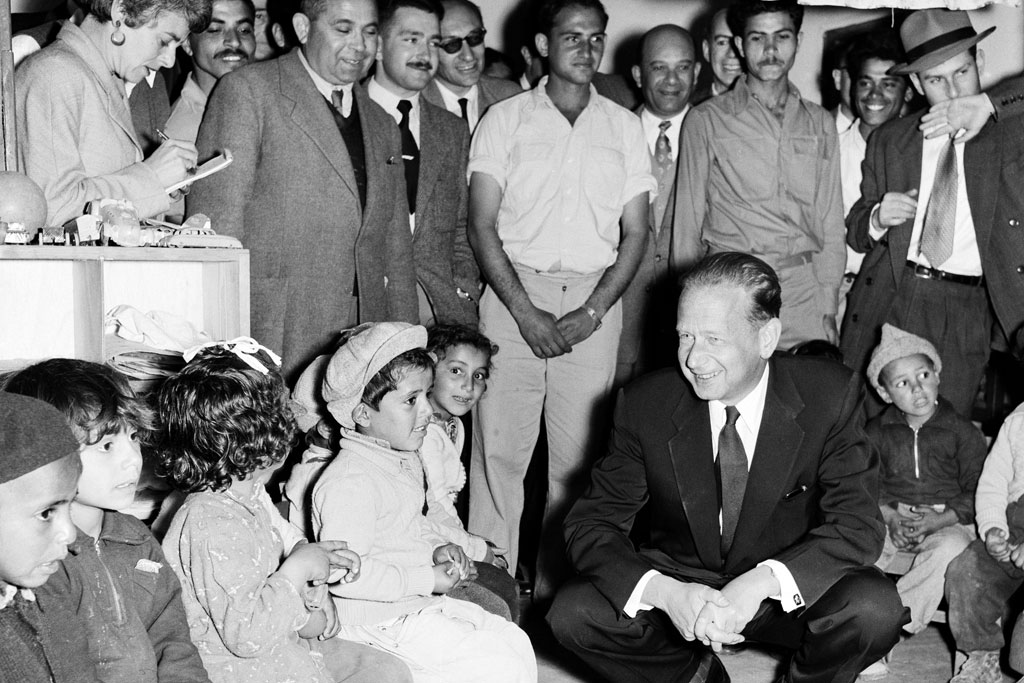
For all his apparent self-sufficiency, there can be little doubt that Hammarskjöld was often a lonely man.
He certainly regarded his all-consuming job as U.N. Secretary-General as a priceless gift and dreaded its coming to an end. In his last years, he fell back more and more on a fatalistic personal mysticism that allowed him to see himself as the bearer of the message and guardian of the flame of the United Nations Charter, and sometimes as a martyr — even a human sacrifice — in the cause of international peace.
Although I worked with Hammarskjöld for eight years, I was never close to him, and it was not until his sudden death that I realized the extent of his hold over my loyalty and imagination. When I went through his papers with his friend, the Swedish diplomat Per Lind, I began to perceive more clearly the extraordinary character, intellect, and sense of mission that lay behind his achievements as Secretary- General.
More than anyone else before or since, Hammarskjöld put the United Nations on the map as a vital guardian of the peace.
He made it a potential force in its own right, especially in times of crisis — something that deeply disturbed hard-line nationalists like Nikita Khrushchev or Charles de Gaulle. He bequeathed to his successors an informal guide for tackling critical international problems.
In 2001, speaking in Hammarskjöld’s hometown, Uppsala, the seventh Secretary-General, Kofi Annan, put it this way. “There can be no better rule of thumb for a Secretary-General, as he approaches each new challenge or crisis, than to ask himself, ‘How would Hammarskjöld have handled this?'” – Brian Urquhart
Character Sketch: Dag Hammarskjöld, Second Secretary-General (Sept. 18, 2021)
Historic Tendean House in the Celebes Islands, Indonesia
The Village of Remboken, North Sulawesi, 5,000 feet up but beneath the volcano Mount Lokan, next to the great Lake Tondano in an area known as Minahasa.
xxx

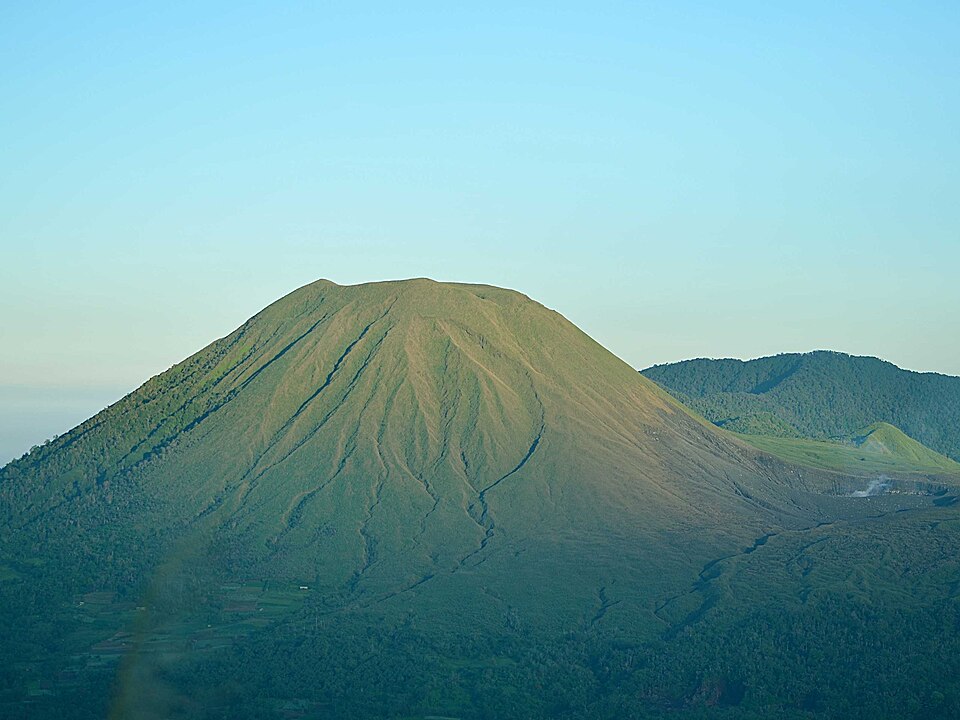
World Leaders Gone All Too Soon
These leaders left lasting legacies despite their shortened lives.
New York, N.Y. It is often surprising how young people have been that have changed the world. How little time they spent creating such tremendous change. Some of the individuals listed died before reaching a typical lifespan, while others died tragically before completing their political goals. Here is a partial chronology of ages at death.
65
64
63
62
- Anwar Sadat (President of Egypt)
61
60
59
- Oliver Cromwell (Lord Protector of the Commonwealth)
58
- Hugo Chávez (President of Venezuela)
57
56
- Abraham Lincoln (President of the United States)
55
- Julius Caesar (Roman General and Statesman)
54
53
52
51
- Christopher Columbus
50
- Franz Ferdinand (Archduke of Austria, heir presumptive to the Austro-Hungarian throne)
49
- Emperor Qin Shi Huang (First Emperor of China)
48
- Harvey Milk (Mayor of San Francisco)
47
46
- John F. Kennedy (President of the United States)
45
44
- Mary, Queen of Scots (Queen of Scotland)
43
42
41
- Robert Kennedy
- Louis XIII (King of France)
40
- Eva Perón
- Malcolm X (Civil Rights Leader)
39
- Che Guevara
- Cleopatra (Pharaoh of Egypt)
- Martin Luther King, Jr. (Civil Rights Leader)
36
- Diana (Princess of Wales)
37
36
35
- Henry V (King of England)
34
33
- Jesus of Nazareth
32
- Alexander the Great (King of Macedon)
31
30
29
28
27
26
25
24
23
22
21
- Napoleon II (King of Rome, Son of Napoleon Bonaparte)
20
19
Joan of Arc (Leader of French Army during the Hundred Years’ War)
18
17
16
15
14
Tsar Peter II of Russia
Louis Armstrong and Race
[draft]

Japanese American Church: Legacy of Faith, Resilience, Community
This history of the Japanese American church is a testament to the enduring strength of faith, the importance of community, and the resilience of a people who have overcome tremendous challenges. From its early beginnings to its role in the post-war rebuilding efforts, the Japanese American church has been, and remains, a cornerstone of the Japanese American experience in the United States.

New York, N.Y. — The story of the Japanese American church in the U.S. is one of profound resilience, cultural preservation, and spiritual growth. From the early days of Japanese immigration to the post-war period of rebuilding, these churches have been centers of faith, community, and social activism.
Early Beginnings: Faith Takes Root
The roots of the Japanese American church in America can be traced back to the late 19th and early 20th centuries, during a time of significant Japanese immigration to the U.S. As Japanese laborers arrived in Hawaii and the West Coast, they brought with them their religious beliefs and traditions. Initially, Buddhist temples served as the primary religious institutions for the Japanese community, reflecting the faith most commonly practiced in Japan.
However, Christianity also began to take hold among Japanese immigrants, partly due to the efforts of American missionaries who had worked in Japan and sought to continue their mission work with Japanese communities in the U.S. Protestant denominations, particularly Methodist, Episcopal, and Presbyterian churches, played a significant role in evangelizing Japanese immigrants. These churches provided not only spiritual guidance but also practical support, such as English language classes, social services, and community gatherings.
The first Japanese Christian church in the continental U.S. was the Japanese Methodist Church in San Francisco, established in 1877. Soon after, other denominations followed suit, and by the early 20th century, Japanese Christian congregations had formed in various cities across the West Coast, including Los Angeles, Seattle, and Portland.

Growth and Challenges: The Pre-War Era
As the Japanese American community grew, so did the number of churches and religious institutions serving them. These churches became vital centers of community life, providing a sense of belonging and identity in a foreign land. They offered not only religious services but also cultural programs, youth activities, and support networks for immigrants navigating the challenges of life in America.
However, the rise of anti-Japanese sentiment in the early 20th century posed significant challenges for these churches. Discriminatory laws, such as the Alien Land Law of 1913 and the Immigration Act of 1924, severely restricted the rights and opportunities of Japanese Americans, creating an environment of hostility and exclusion. Despite these obstacles, Japanese American churches continued to thrive, fostering a strong sense of community resilience and solidarity.
World War II and the Internment Experience
The most devastating chapter in the history of Japanese American churches came during World War II, when the U.S. government forcibly relocated and incarcerated over 120,000 Japanese Americans in internment camps. This period was a profound test of faith for the Japanese American community.
Many Japanese American churches were shuttered, their congregations dispersed to the camps. However, faith did not wane in the face of adversity. In the camps, Japanese Americans established makeshift churches, holding worship services in barracks, mess halls, and other communal spaces. These gatherings provided spiritual comfort and a sense of normalcy amidst the harsh conditions of the camps.
The camp churches were ecumenical by necessity, often blending Protestant and Catholic traditions and bringing together worshippers from various denominations. Ministers and lay leaders, many of whom were also incarcerated, played a crucial role in maintaining the spiritual well-being of the internees. The resilience of these religious communities during the internment period is a testament to the enduring strength of faith among Japanese Americans.
Post-War Rebuilding and Transformation
After the war, Japanese American churches faced the daunting task of rebuilding. Many congregations returned to their pre-war locations to find their churches vandalized, looted, or sold off. Despite these challenges, the post-war period marked a time of renewal and transformation for the Japanese American church.
In the post-war years, Japanese American churches became active in civil rights and social justice movements, reflecting the broader struggles for equality and recognition faced by the community. Churches played a key role in advocating for redress and reparations for the injustices suffered during the internment, and they supported broader efforts for racial equality in the U.S.
The post-war era also saw a diversification of religious practices within the Japanese American community. While Christian churches remained central, there was also a resurgence of interest in traditional Japanese religious practices, including Buddhism and Shinto. This period marked a blending of cultural and religious identities, as Japanese Americans sought to reconcile their heritage with their American identity.
The Modern Era: Legacy and Continuity
Today, the legacy of the Japanese American church is one of resilience, adaptability, and deep community ties. Japanese American churches continue to serve as centers of spiritual life, cultural preservation, and social activism. While the demographic landscape has changed, with many Japanese Americans now living in diverse communities across the country, these churches remain vital to the preservation of Japanese American history and culture.
Modern Japanese American churches often host cultural events, language classes, and social justice initiatives, reflecting the community’s ongoing commitment to both its heritage and its future. These churches continue to play a crucial role in fostering a sense of identity and belonging among Japanese Americans, while also reaching out to broader, more diverse communities.

The story of the Japanese American church is a powerful reminder of the ways in which faith, culture, and community can sustain a people through the most challenging of times. It is a legacy that continues to inspire and guide future generations of Japanese Americans and all who value the power of faith and resilience in the face of adversity.
This history of the Japanese American church is a testament to the enduring strength of faith, the importance of community, and the resilience of a people who have overcome tremendous challenges. From its early beginnings to its role in the post-war rebuilding efforts, the Japanese American church has been, and remains, a cornerstone of the Japanese American experience in America.
Japanese American Church: Legacy of Faith, Resilience, Community (Aug. 15, 2024)
#JapaneseAmericanHistory #FaithAndResilience #CulturalHeritage #JapaneseAmericanChurch #CommunityBuilding
Tags: Japanese American history, Immigration, Christian Churches, World War II, Internment, Cultural Preservation
